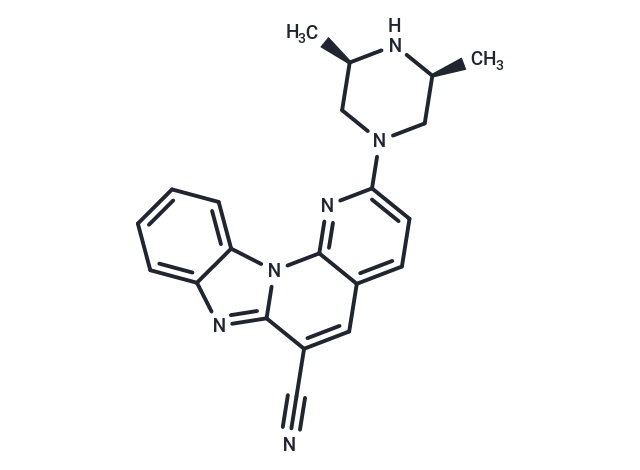Shopping Cart
Remove All Your shopping cart is currently empty
Your shopping cart is currently empty
POL1-IN-1 (Compound 3A) can effectively inhibit the transcription of RNA polymerase I in the A375 malignant melanoma cell line but has no effect on polymerase II.

| Pack Size | Price | USA Warehouse | Global Warehouse | Quantity |
|---|---|---|---|---|
| 1 mg | $41 | - | In Stock | |
| 5 mg | $97 | - | In Stock | |
| 10 mg | $147 | - | In Stock | |
| 25 mg | $228 | - | In Stock | |
| 50 mg | $343 | - | In Stock | |
| 100 mg | $497 | - | In Stock | |
| 1 mL x 10 mM (in DMSO) | $105 | - | In Stock |
| Description | POL1-IN-1 (Compound 3A) can effectively inhibit the transcription of RNA polymerase I in the A375 malignant melanoma cell line but has no effect on polymerase II. |
| Synonyms | Compound 3A |
| Molecular Weight | 356.42 |
| Formula | C21H20N6 |
| Cas No. | 1822358-25-7 |
| Smiles | C(#N)C=1C=2N(C=3C(C1)=CC=C(N3)N4C[C@@H](C)N[C@@H](C)C4)C=5C(N2)=CC=CC5 |
| Relative Density. | no data available |
| Storage | Powder: -20°C for 3 years | In solvent: -80°C for 1 year | Shipping with blue ice/Shipping at ambient temperature. | ||||||||||||||||||||
| Solubility Information | DMSO: 3.57 mg/mL (10.02 mM), Sonication is recommended. | ||||||||||||||||||||
Solution Preparation Table | |||||||||||||||||||||
DMSO
| |||||||||||||||||||||
| Size | Quantity | Unit Price | Amount | Operation |
|---|

Copyright © 2015-2025 TargetMol Chemicals Inc. All Rights Reserved.